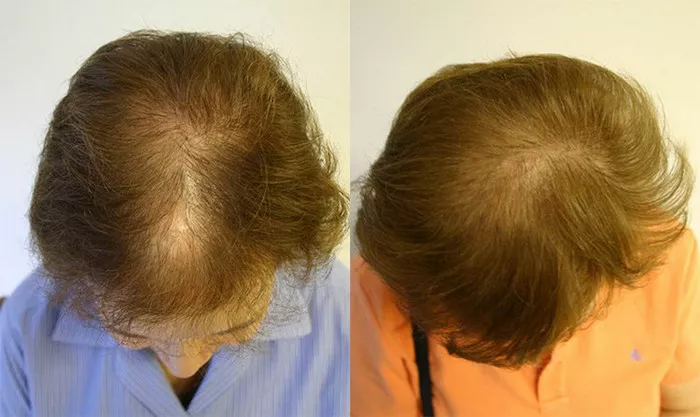Hair is not merely a part of our physical appearance; it serves as a symbol of health, vitality, and identity. Therefore, any changes in its quantity or quality can evoke concern. Two common terms used to describe such changes are hair loss and shedding. While often used interchangeably, these terms refer to distinct processes with different causes, implications, and management strategies. In this comprehensive guide, we delve into the nuances between hair loss and shedding, empowering readers with the knowledge to navigate these concerns effectively.
Defining Hair Loss and Shedding
Before delving into their differences, it’s essential to understand the fundamental definitions of hair loss and shedding:
- Hair Loss: Hair loss, medically known as alopecia, refers to a reduction in the density of hair on the scalp or other parts of the body. This reduction can be gradual or sudden and may result in visible bald patches or thinning hair.
- Shedding: Shedding, on the other hand, is a natural and temporary process where individual hair strands fall out at the end of their growth cycle. Shedding is a normal part of the hair growth cycle and typically occurs evenly across the scalp.
Differentiating Hair Loss from Shedding
While both hair loss and shedding involve a decrease in the number of hair strands, several key distinctions set them apart:
1. Cause:
- Hair Loss: Hair loss can be attributed to various factors, including genetics (androgenetic alopecia), hormonal changes (such as those occurring during pregnancy or menopause), certain medical conditions (like alopecia areata), medications, and underlying health issues.
- Shedding: Shedding is primarily influenced by the hair growth cycle. Each hair follicle undergoes a cycle consisting of growth (anagen), transitional (catagen), and resting (telogen) phases. Shedding occurs during the telogen phase when old hairs are shed to make way for new ones. External factors such as stress, dietary deficiencies, and changes in the environment can also affect shedding.
2. Duration:
- Hair Loss: Hair loss can be persistent and may continue until the underlying cause is addressed. Depending on the cause, hair loss may be temporary or permanent.
- Shedding: Shedding is a cyclical process and typically lasts for a few months. It is considered normal as long as the shedding rate remains within the expected range.
3. Pattern:
- Hair Loss: Hair loss may exhibit specific patterns, such as thinning at the crown (in the case of androgenetic alopecia) or patchy bald spots (in alopecia areata).
- Shedding: Shedding is generally uniform across the scalp and does not follow a distinct pattern.
4. Density of Shedding:
- Hair Loss: In cases of significant hair loss, the density of shedding may be noticeably higher than normal shedding rates.
- Shedding: Normal shedding involves the loss of approximately 50 to 100 hairs per day. Excessive shedding, known as telogen effluvium, may result in higher daily hair loss rates.
5. Regrowth:
- Hair Loss: Regrowth may be limited or absent in certain types of hair loss, particularly those involving scarring of the hair follicles.
- Shedding: Shedding is followed by the regrowth of new hairs as part of the natural hair growth cycle.
Diagnosis and Management
Accurate diagnosis is crucial for determining the appropriate management approach for hair loss or shedding. Consultation with a dermatologist or trichologist may involve:
1. Medical History: Understanding the patient’s medical history, including any recent life events, medications, or underlying health conditions.
2. Physical Examination: Examination of the scalp and hair follicles to assess the pattern and extent of hair loss or shedding.
3. Diagnostic Tests: These may include blood tests to evaluate hormone levels, thyroid function, and nutritional status, as well as scalp biopsies or trichograms to assess hair follicle health.
Based on the diagnosis, management strategies may include:
1. Treatment of Underlying Causes: Addressing underlying medical conditions, hormonal imbalances, or nutritional deficiencies contributing to hair loss or shedding.
2. Medications: Prescription medications such as minoxidil (Rogaine) or finasteride (Propecia) may be recommended for certain types of hair loss.
3. Lifestyle Modifications: Adopting a healthy lifestyle, managing stress, and ensuring a balanced diet rich in essential nutrients can support overall hair health.
4. Topical Treatments: Topical treatments containing ingredients like caffeine, saw palmetto, or ketoconazole may help promote hair growth and reduce shedding.
5. Hair Restoration Procedures: In cases of advanced hair loss, procedures such as hair transplantation or scalp micropigmentation may be considered to restore hair density and improve appearance.
Conclusion
In summary, while hair loss and shedding both involve a decrease in the number of hair strands, they are distinct processes with different causes, durations, and patterns. Understanding these differences is crucial for accurate diagnosis and effective management. If experiencing concerns about hair loss or shedding, consulting a qualified healthcare professional is recommended to determine the underlying cause and appropriate treatment options. By addressing these concerns proactively, individuals can maintain optimal hair health and confidence in their appearance.


